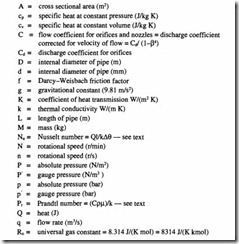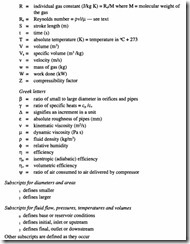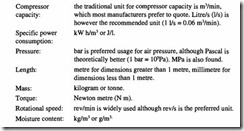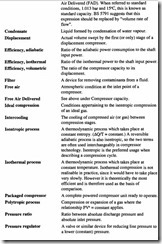NOMENCLATURE AND UNITS
Nomenclature
Unless otherwise specified in the text, the following symbols are used consistently throughout this book:
Note on units
SI units are used consistently throughout this handbook. Certain conventions within the SI structure are used generally throughout the European compressed air industry. These are as follows:
Conversion factors
For the convenience of those readers more familiar with Imperial units, the following conversion factors may be used.
The values quoted are adequate for most engineering purposes, ie accurate to at least 3
Terms and definitions used in the Compressor Industry (see also BS 1571 and BS 5791):
Related posts:
Applied Pneumatics:Circuit analysis
Compressed Air Transmission and Treatment:Carbon monoxide
Compressed Air Transmission and Treatment:Solid contaminants
Pipelines and valves:Flow splitting and Rubber hose.
Erosive wear:Wear of straight pipeline
Optimizing and up-rating of existing systems:The influence of changing pipeline diameter
Operating problems:System related
Review of pneumatic conveying systems:System types,Open systems and Positive pressure systems.
COMPRESSORS:ROTARY COMPRESSORS
HYDRAULIC PUMPS:Centered Internal Gear
Hydraulic pumps:Principle of operation.
Hydraulic Pumps and Pressure Regulation:vane pumps
Control Valves:graphic symbols
ENERGY TRANSFER BY HEAT,WORK,AND MASS:CONSERVATION OF MASS PRINCIPLE
FORCED CONVECTION:PARALLEL FLOW OVER FLAT PLATES







